In Quebec City, history is not far away
In Quebec City, history is never far away! Be it the Chateau Frontenac, the luxury hotel that towers unmistakably on the Cap Diamant above the St. Lawrence River. Be it the plains of Abraham at the gates of the city, on which the decisive battle between the French and British for the continent of America took place. Or be it the streets in the Petit Champlain district below the city hill, where Samuel de Champlain built his wooden palisade fort - everything bears witness to the past of the capital of the province of Quebec.
This is where the first schools and universities emerged. From here the explorers set out to explore the areas west of the known settlement area. The representatives of the colonial administration also came here to enforce the ideas of the home government about life in the colonies. Witnesses of these events are the churches, school buildings and universities that still look out from the Upper Town onto the St. Lawrence River. The lower town in Old Quebec gives the impression of a city that has grown historically. You can still find traces of the founders, even if most of them have long since disappeared in the fog of time.
In the footsteps of the first settlers in historic Quebec City
In the quarter below Cap Diamant you can feel the closeness of the founding fathers of Quebec most intensely. At this point, Samuel de Champlain built a wooden palisade fort in 1608. There's nothing left of that today except a few names. But the cannons are still aiming at St. Lawrence. The stone houses are grouped around the Church of Notre-Dame-des Victoires as in earlier times. The church itself is said to provide support against attackers. All of this creates an attitude towards life like in France. This can be felt everywhere in the city.
The Rue Petit Champlain was already a beaten path in the time of Samuel de Champlains, which led to "Champlain's fountain". Soon there were the first houses along this path. The beaten path became a street. During the French rule, craftsmen and their families lived along the street. Working families from Ireland moved here in the 19th century. They made their living in the docks. Today dealers and shop owners have settled here.
Colonial schools in Old Quebec
The Ursuline Convent is located on Rue du Parloir, a street not far from Place d'Armes in Old Quebec. It is just one of the schools in the city that can be traced back to the colonial days of the French. The nuns came from France to teach the daughters of the colonists. They soon expanded their activities to include Indian tribal girls. They wanted to teach them skills that were considered necessary for the women from France. They learned to weave, sew and cook. The nuns tried to teach their protégés the culture of the colonists.
Not far away is the Séminaire du Québec near the city hall. This building is also reminiscent of the French educational policy. This was the first time that higher education was offered in Quebec. Above all, priests were trained on site. On the one hand, they should be responsible for the spiritual well-being of the colonists. On the other hand, they imparted Christianity to the natives.
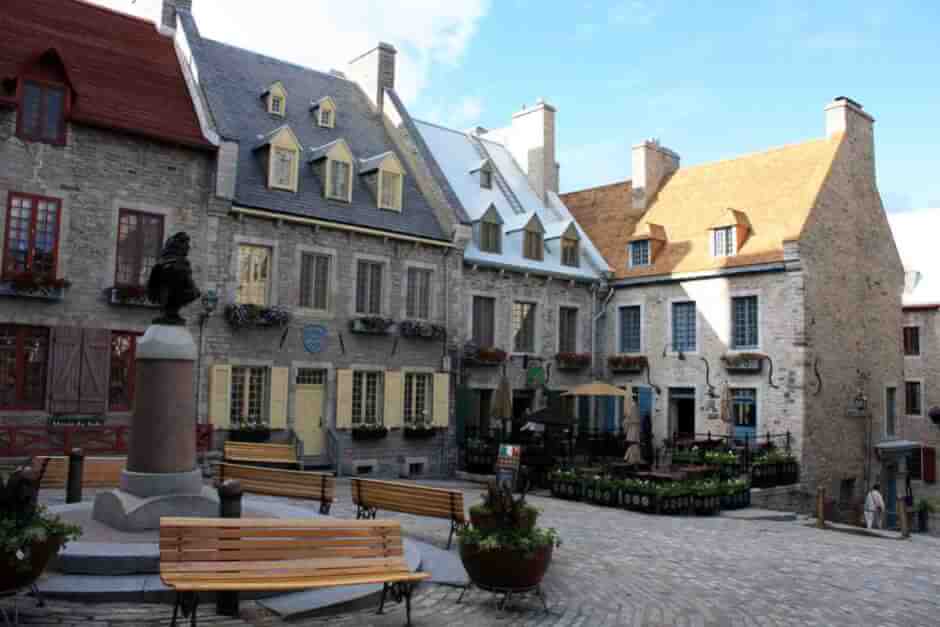
The Plains of Abraham: Turning Point in History
In front of the gates of the city wall in the upper area the old Town extend the plains of Abraham. Where today a park extends to the edge of the cliff above Saint Lawrence, the decisive battle between the French and British armies over the fate of New France took place on September 12, 1759. The British commander, General James Wolfe, and his troops met the French army led by Louis-Joseph, Marquis de Montcalm. There were more than 10.000 soldiers involved in this battle. The outcome of this still influences the fate of the province of Quebec today.
Political discussions to this day
The Plains of Abraham are one of Canada's National Urban Parks and a central memorial site for Quebec's history. The battle of 1759 still sparks political debate today. In 2009, a large-scale reenactment of the battle was planned for the 250th anniversary – but it had to be canceled after fierce protests from separatists. Instead, literary texts and historical documents were read out, including controversial texts such as the FLQ manifesto of the independence movement.
Culture of remembrance around the Plains of Abraham
To this day, the culture of remembrance surrounding the Plains of Abraham remains a sensitive topic. In recent years, initiatives have increasingly emerged that seek to illuminate history from a broader perspective – including the Perspectives of indigenous peoples and marginalized groups. The question of how strongly Quebec emphasizes its historical identity in contrast to Canada also continues to generate debate, for example in the design of anniversary events or the question of new monuments. For example, a new exhibition opened in 2023 at the Musée de l'Amérique francophone, addressing the complex history of colonialism, conquest, and cultural diversity in Quebec.
British Traces: The Cathedral of St. Trinité
Not far from the Convent of the Ursuline Sisters and the Séminaire du Québec, the Anglican Cathedral stands in the center of the old town. The simplicity of its furnishings stands out clearly from the splendor of the Notre Dame Basilica. The Catholic Church is just a few meters away from the city hall. Here it becomes clear what a turning point the British takeover represented for the French Canadians. In many churches in the province, such as Ste. Anne-de-Beaupré, the Catholics of Quebec seem to want to emphasize their religious heritage with imposing church buildings as a symbol of their identity as French Canadians.
Schools & Missions: Education in the Colonial Period
The missionization of Indigenous girls by the Ursuline nuns, as described here, was part of a comprehensive assimilation policy that is viewed very critically today. These measures aimed to impose European values and ways of life on Indigenous cultures, leading to profound cultural loss and much suffering. As part of Canada's reconciliation policy—including through the work of the Truth and Reconciliation Commission—this period is being intensively examined today. The aim is to acknowledge the historical injustice, to make its effects visible up to the present day, and to find ways to support Indigenous communities and strengthen their cultures. It is important not to gloss over such historical facts, but to consciously assess them and learn from them.
The Château Frontenac: Landmark and luxury hotel
The most striking building in the city of Quebec is more of a symbol of compromise. The Chateau Frontenac is located in the middle of the city center on the Place d'Armes. Horse-drawn carriages wait for customers under the deciduous trees. Next to it, the statue of Samuel de Champlain in the square in front of the hotel watches over the place of St. Lawrence. From there it opens into a funnel until it flows into the Atlantic. From the Dufferin terrace you can look out over the point where the Saint Lawrence River widens and flows around the island of Ile d'Orléans.
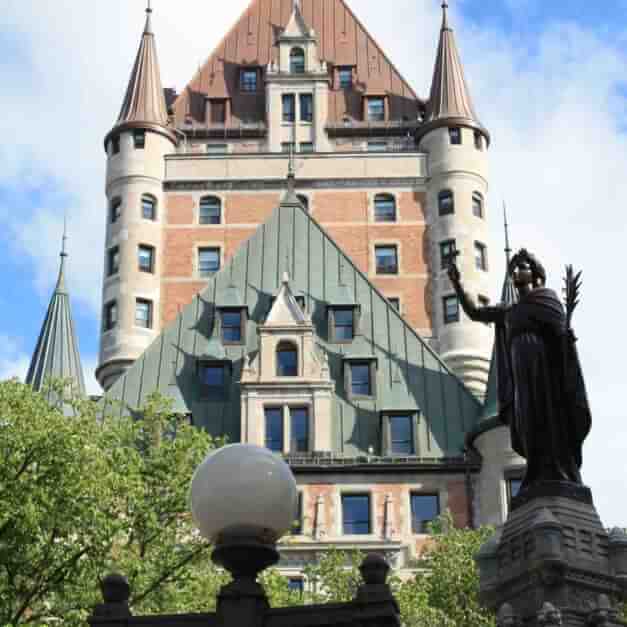
One of the railway hotels of the Canadian Pacific Railway
Even if you've never been to Quebec City, you can enjoy the sight of it Chateau Frontenac Pretty much everyone in the center of the old town knows it. No wonder, the Chateau Hotel towers over the lower town from Cap Diamant above the St. Lorenz River. It is therefore a popular photo opportunity for tourists from all over the world. It's also part of any sightseeing tour of Quebec City.
The Chateau Frontenac stands on the site of the “Vieux Chateau” (the old castle). This is what the Château Haldimand was once called, in which the administration and reception rooms of the colonial government were housed. In 1880, the idea came up to build a luxury hotel in its place. It was William Van Horne, the managing director of the Canadian Pacific Railway, who commissioned the New York architect Bruce Price to do the job. He was supposed to design a hotel for the passengers of his railway line.
Price was inspired by the architecture of France at the time. This initially developed into a hallmark of castle hotels in Canada and eventually even the country's government buildings were built in this style.
Opened in 1893, the hotel was an immediate success. It underwent several expansions well into the 20th century. The most recent expansion was completed between 2011 and 2014, during which the hotel was extensively renovated and modernized.
Guest list that impresses
Château Frontenac boasts a long history of hosting prominent guests. From famous film actors and musicians to political figures, the hotel has attracted celebrities from all over the world since its opening. Even today, the château remains a popular retreat for international stars and thus remains a constant focus of public interest. In addition to its luxurious furnishings and historic location, the unique atmosphere certainly contributes to the fact that well-known personalities enjoy staying here – whether for private reasons or as part of events and festivals in Quebec City.
Château Frontenac even played a role in world history: During World War II, the famous Quebec Conferences, where important decisions were made between the Allies, took place here. This historical background gives the hotel special significance to this day.
Location on the Cap Diamant
Today the luxury hotel sits atop Cap Diamant. From its “forecourt”, the Terrace Dufferin, you have a view of the St. Lawrence River, the lower town, the Petit Champlain district, the town of Lévis and the Ile d'Orleans. This seems to lie like a plug in the river before the narrowing of the St. Lawrence near Quebec City. The hotel develops its charm especially in autumn, when the leaves of the Indian summer bathe the city in warm colors, or in winter, when the snow covers the battlements and towers of the castle hotel like powdered sugar, as if it wanted to give its guests a particularly warm welcome be called.
400 years of history in Quebec City, Canada's oldest city
There are few places in North America older than Quebec City. However, there is none where history is still as present as in the capital of the province of Quebec. The city wall still surrounds the old town today. It is both a symbol of French Canadian identity and a sign that they are still trying to differentiate themselves from the rest of Canada. At the same time, Quebec is also a city that still feels very European. This is probably one of the reasons why it seems inviting to visitors from the Old World. It enchants visitors with its charm, with the harmonious cityscape - despite all the quarrels - and, above all, with its flair, which is so reminiscent of France.
Travel Arrangements:
Parking at the airport
Here you can reserve your parking space at the airport before departure.
Getting to Quebec City:
Compare and book flights here*(Advertisement) Quebec City has an airport. From there, you can continue your journey by rental car or public transportation.
Rental car from Quebec City:
Rent a car - book quickly and easily!
Hotels in Quebec City:
Accommodations in and around the city* For example, you can book here. One Accommodation in Quebec City for slow travelers However, you can find it here.
If you book via a link marked *, we receive a commission, which we use to run this blog.
City Tour Quebec City:
If you book one of these offers, we receive a commission, which we use to run this blog.
Do you know this?
- Culinary journey of discovery through Quebec City: local specialties up close
- Schools, churches, monasteries - the religious heritage of Quebec
- Quebec Attractions
- Things to do in Quebec City for slow travelers and connoisseurs
- The Montmorency Waterfall in Quebec: Insider tips for your visit
- Dining in Quebec: discover the best specialties
- Montreal's maritime heritage on the St. Lawrence River
- Underwater world of the St. Lawrence River in Quebec: Exploramer
- Never be speechless again: Your survival guide to the Quebec language
- Autumn decoration for outside
- Ottawa Winterlude
- Ottawa Winterlude hotels
Source: My own on-site research. Some of this information was obtained during press trips hosted by Tourism Quebec. We are very grateful for this. I also gathered this information during my travels as a tour guide.
Text: Copyright Monika Fuchs and TravelWorldOnline
Photos: Copyright Monika Fuchs and TravelWorldOnline
Note: This article first appeared in the travel magazine 360 ° Canada
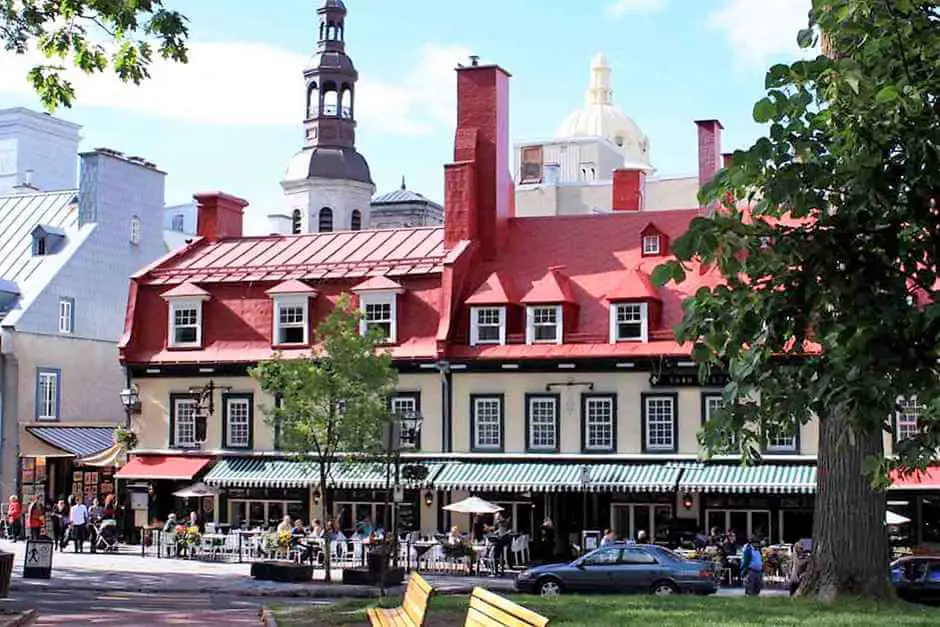

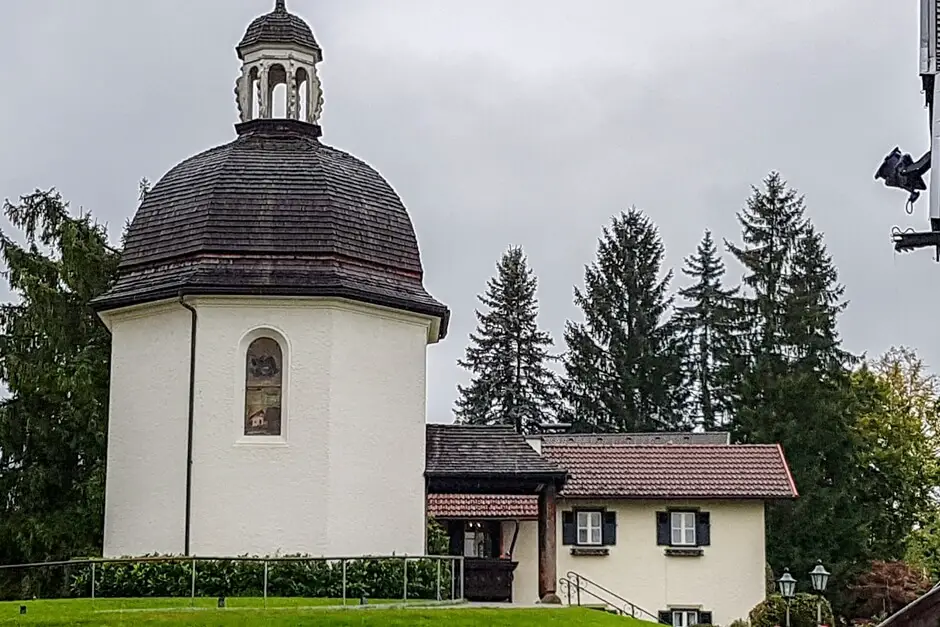
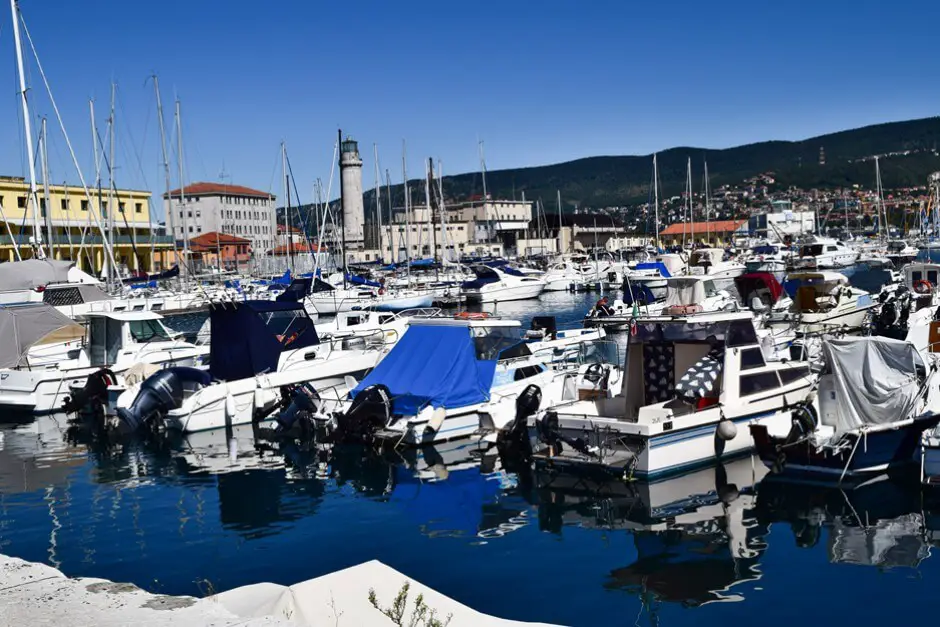
Quebec is really a great city. I liked the old town very much. Unfortunately we were only there for two nights. I would have liked to have a look at some of the surrounding area, but maybe it turns out that I am there. :) I will link your very interesting article directly under my Quebec article. :)
Best regards,
Peggy
Dear Peggy,
Quebec is one of our favorite cities in Canada. It pulls us over there again and again :). The surrounding area is also worth a trip - or even several. If you are interested, we already have quite a few of them Articles about Quebec published in our blog.
Best regards,
Monika